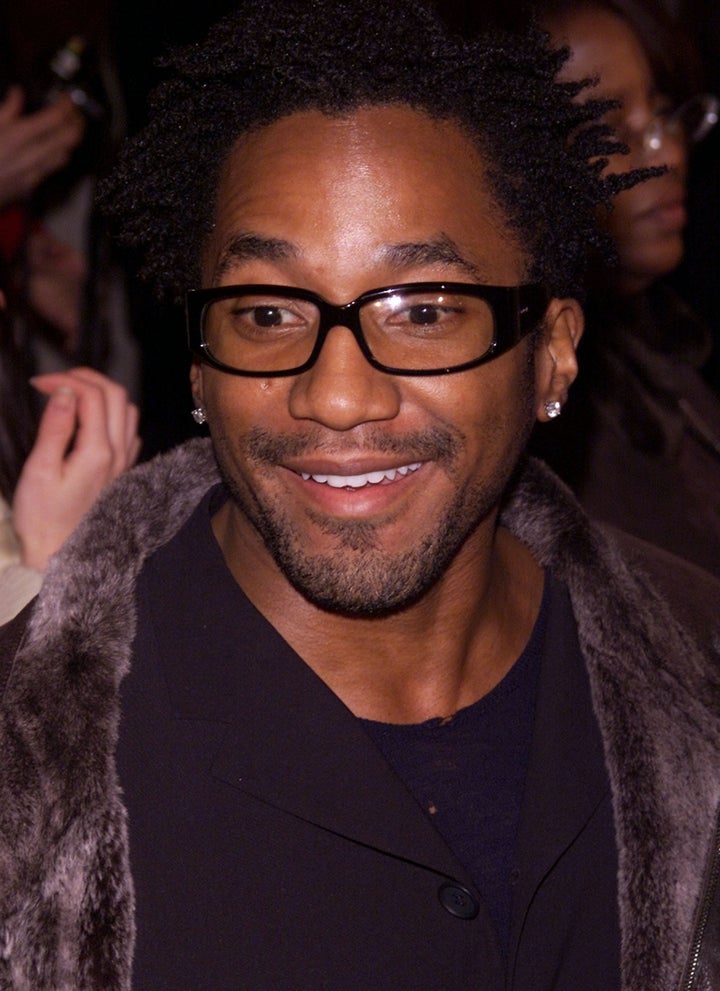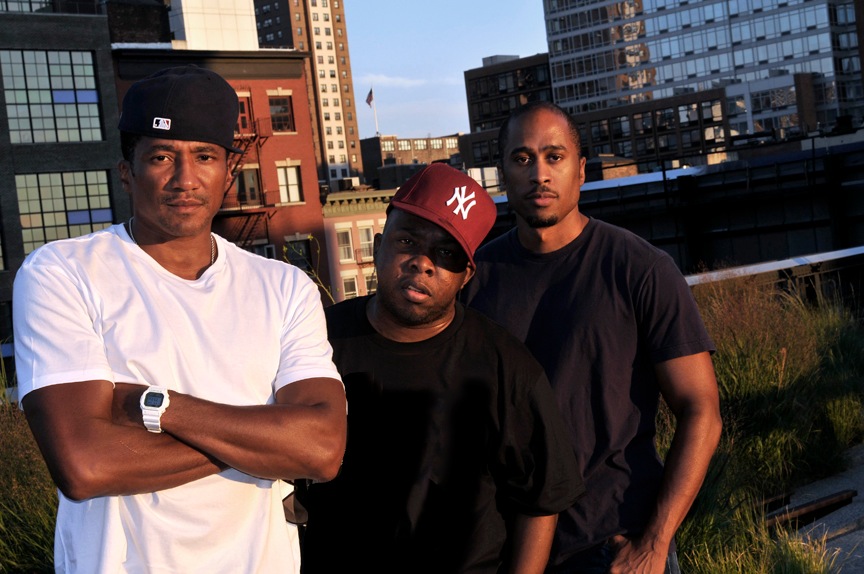
 Don't know much about hip-hop but like a good story? While sounding like a baby boomer droning on about how the Beatles were the greatest of all time and everything else an empty shell, I'm brought to that temptation about A Tribe Called Quest after seeing a love letter to hip-hop called Beats Rhymes and Life, the documentary about them. The passion, heartache, energy, raw honesty, complaints, hope, and dismay of a love letter is all there.
Don't know much about hip-hop but like a good story? While sounding like a baby boomer droning on about how the Beatles were the greatest of all time and everything else an empty shell, I'm brought to that temptation about A Tribe Called Quest after seeing a love letter to hip-hop called Beats Rhymes and Life, the documentary about them. The passion, heartache, energy, raw honesty, complaints, hope, and dismay of a love letter is all there.
"Yeah, I'm a pretty thorough fan," said Michael Rapaport, director, actor and self-proclaimed hip-hop head, in a recent interview. "I mean, my Dad brought Sugarhill Gang to me when I was 9. And I would listen to people on the radio like cool DJ Red Alert and Mister Magic like it was unlocking some kind of secret, cracking a code," he said.
Even with that pedigree, its very difficult to communicate the imagination, dexterity, consciousness and refreshment of A Tribe Called Quest when their first album came out, and for that matter, as each of their albums came out. After all, in the world of hip-hop, which is so fast-paced, ever-changing, searching for new samples, new loops, new catch phrases, new somethings to say, new gimmicks, you can become old school quickly. But even today, its hard to imagine a hip-hop album with samples by Lou Reed, a sitar, the French national anthem, and Mexican acoustic guitar or titles like "Bonita Applebum", "I Left My Wallet in El Segundo" or "The Low End Theory".
And so its even more of a challenge to somehow try and capture that on film, and not do it in a VH1 kinda way (with all the cheesehead comics and off-brand celebrities speaking on something for which they are not expert). And on top of that try, as earnest filmmakers like to say, to "tell a story", rife with conflict, emotion, and journey. But that's exactly what Michael Rapaport has done.
 Credit Wyatt Cross
Credit Wyatt Cross
Yes, we see the group's beginning as striving buddies in high school. We hear classic tales of "breaking big", their rise, the breakups, the fall, the reunion tour. There's plenty of hip-hop legends giving them props. And yes, there is a primary storyline about the beef between two members, Q-Tip and Phife which is right up there with Paul McCartney and John Lennon or Mick Jagger and Keith Richards apparently. But the parallels to your average rockumentary kinda stop there.
Unlike many stories of this type, there's no tragic tale about drug use and abuse. Yet, we learn about Phife's largely unknown struggle with Type 1 Diabetes. There's no real fighting about money, but the revelation that motivation to do a reunion concert was about raising money for Phife for medical bills gets surfaced. And nobody got shot or stabbed, unless you count one or two (unintentional?) verbal daggers from Q-Tip that probably pierced the heart of ATCQ fans as much as his band mates, but kept things real.
"It's a classic tortured artist thing with him ya know?" said Rapaport. Comparing Q-Tip to brooding perfectionists like Brando, Picasso, and James Brown, he said "getting the work out of him can be a chore, but then he hits you and...boom."
Not to spoil things completely, there are also a number of other reveals and insights that make for good storytelling and documentation to people that know them, and precious glimpses to the hard-core fan.
This is all stitched together by Rapaport, the actor making his debut as a director, with the skill of documentaries like When We Were Kings building us to a moment of confrontation and reconciliation. Using rare video footage and brand new, cinema verite approaches, he stitches and samples much like a Tribe song itself. In fact, one unique style employed is the use of the group's songs less as a time marker and more of a Greek chorus to tell this tale. Careful attention is paid even in art direction with the help of animator James Blagden who reinforces art styles from the groups 2nd and 3rd albums through live animation transitions and especially the opening credits and promotional poster.
Feted at Sundance Film Festival and having just won the Best Documentary award at the Los Angeles Film Festival, its an important contribution to the historical documentation of hip-hop, on par with works like the incredible history book Cant Stop, Won't Stop by Jeff Chang or the hip-hop encyclopedia "Bring the Noise" by Havelock Nelson and Michael Gonzalez. The latter, in 1991, referred to Tribe as "the first...that consciously merges the elitism of jazz with the pop structure of hip-hop." This film is essential subject matter for a Hip-Hop History 101 curriculum.
"I've talked to an eclectic range of reporters more so than in my acting" says Rapaport who's appeared in movies by Spike Lee, Woody Allen, and the TV series Boston Public. "I like to think that says something about the accessibility of Tribe," he said. And indeed for this film. It gives us something to think about in terms of artistic vision, relationships, business, and family, especially when they all have to comingle and go on a journey, er, quest.
Film opens July 8 in Los Angeles and New York. July 15 in other cities.
